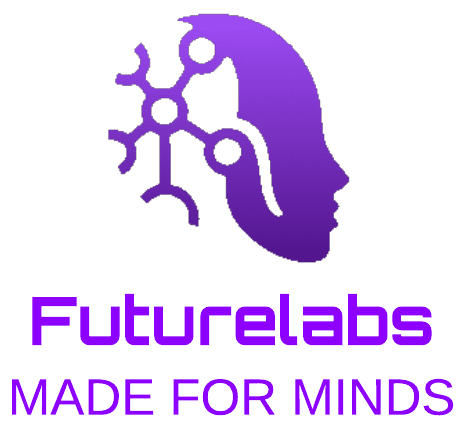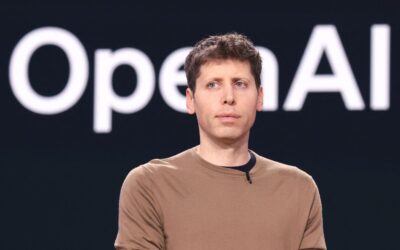Artificial Intelligence Today: A Landscape of Innovation and Reflection
In the early decades of the 21st century, artificial intelligence has ceased to be a futuristic promise and has become an everyday reality. Its evolution, accelerated by unprecedented technological advances, has permeated industries, redefined human interactions, and sparked ethical debates that challenge our conception of society. Today, AI is not only a tool for optimization, but also a mirror reflecting both our ambitions and our contradictions.
The present of artificial intelligence is defined by a fascinating duality: on one hand, systems capable of emulating human creativity, such as generating poetry or painting pictures; on the other, algorithms that make critical decisions in fields like justice or healthcare, with implications that go beyond the technical and delve into the moral. This duality marks a historical moment in which technology advances faster than our ability to comprehend its consequences.
One of the central axes of current development is Generative Artificial Intelligence, whose rise has democratized access to tools once reserved for experts. Models like OpenAI’s GPT-4, Anthropic’s Claude, or Google’s Gemini not only answer questions, but also write code, summarize complex texts, and simulate philosophical conversations. Meanwhile, systems like DALL-E 3, MidJourney, or Stable Diffusion have revolutionized digital art, enabling the creation of hyper-realistic images from textual descriptions. These advances, powered by neural network architectures known as transformers, operate through an attention mechanism that — in a simplified manner — mimics the way humans prioritize information. However, their effectiveness depends on colossal amounts of data and energy, a fact that has ignited debates about sustainability and equity in access to computational resources.
In the Scientific Field, Artificial Intelligence Acts as a Discovery Accelerator
Projects like AlphaFold, developed by DeepMind, have solved the “protein folding problem,” a biological puzzle that had hindered drug development for half a century. Today, thanks to predictive models, scientists can identify protein structures in hours instead of years, paving the way for treatments against Alzheimer’s and cancer. In particle physics, machine learning algorithms filter signals in CERN experiments, while in astronomy, AI classifies potentially habitable exoplanets from space telescope data.
In the Business Sector, a Transformation Driven by Intelligent Automation
Platforms like Salesforce Einstein or Microsoft Copilot integrate AI to predict sales trends, draft emails, or manage projects. In logistics, companies like Amazon use autonomous robots in warehouses, coordinated by systems that optimize routes in real time. However, this efficiency comes at a cost: according to the World Economic Forum, 40% of current job skills could become obsolete by 2025, a figure that underscores the urgency of workforce reskilling policies.
On a More Personal Level, Artificial Intelligence Has Infiltrated Everyday Devices
Virtual assistants (Siri, Alexa) learn from our habits to anticipate needs; smartphones adjust their brightness based on the environment, and social media platforms use recommendation algorithms that, while personalizing experiences, have also been criticized for creating information bubbles. This omnipresence raises uncomfortable questions: Where is the line between convenience and surveillance? Who owns the data that feeds these systems?
Advances in Natural Language Processing (NLP) Have Been Particularly Disruptive
Models like LaMDA from Google or Llama from Meta can maintain coherent conversations, but their ability to generate persuasive misinformation has led companies and governments to seek verification mechanisms. Projects like “Watermarking for Language Models” —which inserts imperceptible marks into AI-generated texts— aim to differentiate the human from the artificial, a critical need in a world where voice and video deepfakes threaten the integrity of elections and markets.
However, Technical Progress Has Not Gone Hand in Hand With the Resolution of Ethical Dilemmas
Algorithmic biases remain an endemic issue: recruitment systems that discriminate based on gender or policing tools that misidentify ethnic minorities reveal that AI, far from being neutral, reproduces historical prejudices. Organizations like the Algorithmic Justice League, founded by Joy Buolamwini, work to audit these systems, while the European Union is advancing its Artificial Intelligence Act, the first comprehensive legal framework that classifies applications by risk and prohibits uses such as facial recognition in public spaces.
In the Medical Field, Artificial Intelligence Promises Revolutions but Faces Skepticism
Although algorithms can diagnose breast cancer with accuracy comparable to expert radiologists, clinical adoption is slow due to legal liability and transparency issues. How can we trust a system that does not explain its reasoning? Research in Explainable Artificial Intelligence (XAI) aims to make the “black boxes” of models understandable—a crucial step in earning the trust of professionals and patients.
Looking Ahead, the Race Toward Superintelligence Divides the Scientific Community
Figures like Elon Musk and Nick Bostrom warn of existential risks, while others, like Andrew Ng, consider these concerns premature. Amid the debate, initiatives such as the Partnership on AI emerge, where academics, companies, and non-governmental organizations collaborate to ensure that artificial intelligence benefits humanity.
Today’s Artificial Intelligence Is, in Essence, a Paradoxical Phenomenon
A tool of progress that demands caution, a human creation that surpasses us in specific tasks but lacks consciousness. Its development is not just a story of chips and algorithms, but of collective aspirations, moral decisions, and, above all, our ability to guide a technology that, as philosopher Nick Bostrom aptly noted, could be “the last invention we ever need to make.” The challenge is no longer to build smarter machines, but to ensure that their intelligence serves a more just and thoughtful future.






0 Comments